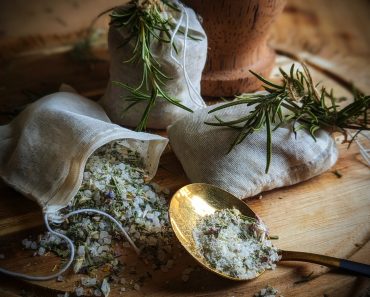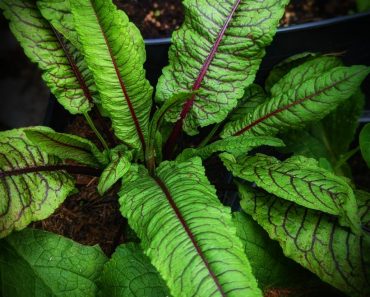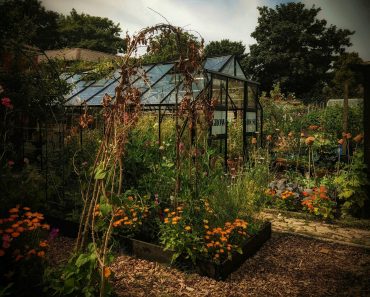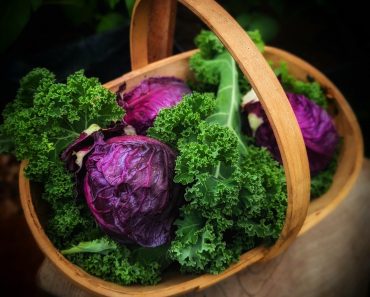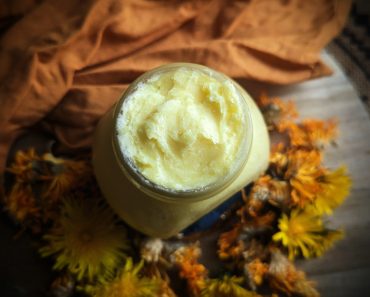Learning how to Grow Runner Beans is a piece of Cake! I find them to be extraordinarily fuss free plants that will thrive in most conditions. They are vigorous climbers and abundant croppers, covering their structures in record time! Yielding Giant Pods of gorgeous plump beans 🫘
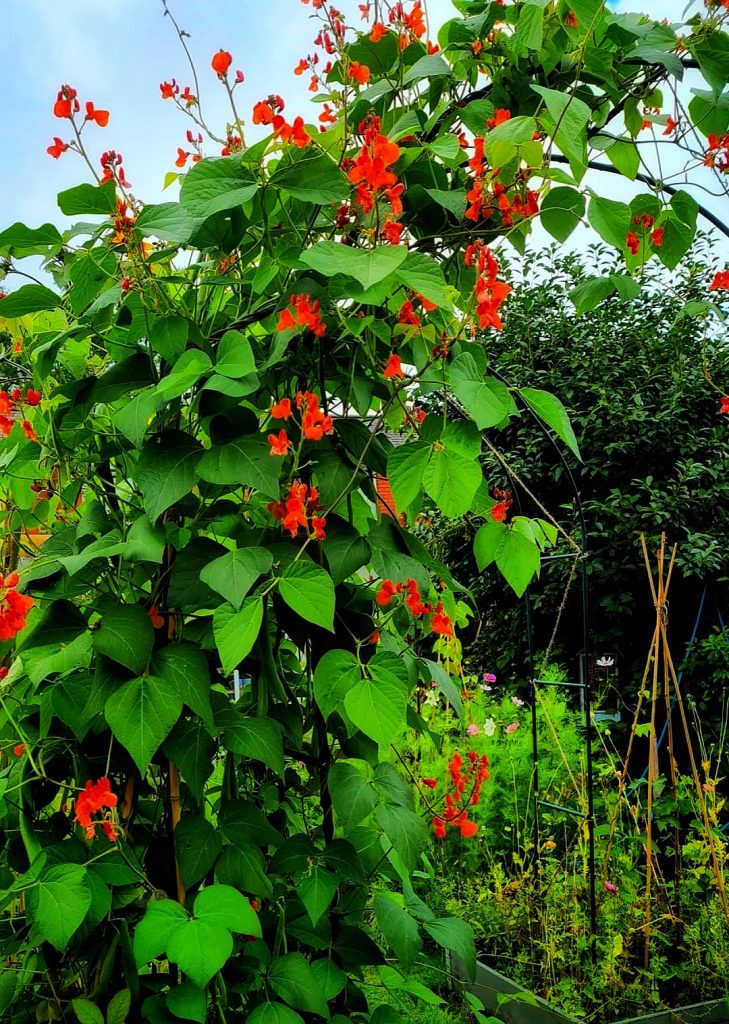
This post may contain affiliate links please see my disclosure policy
A little Runner Bean History
Runner Beans are members of the Fabaceae family, and are native to the cooler regions of central and northern South America, where they have been grown and harvested for more than 2000 years! They were brought to England in the seventeenth century by King Charles I gardener, John Tradescant.
They were originally grown as a decorative plant owing to their dense and floral habit, before being used as a food source. Today Runner Beans are grown Widely in the uk and in turn have become a very popular food amongst the British folk.
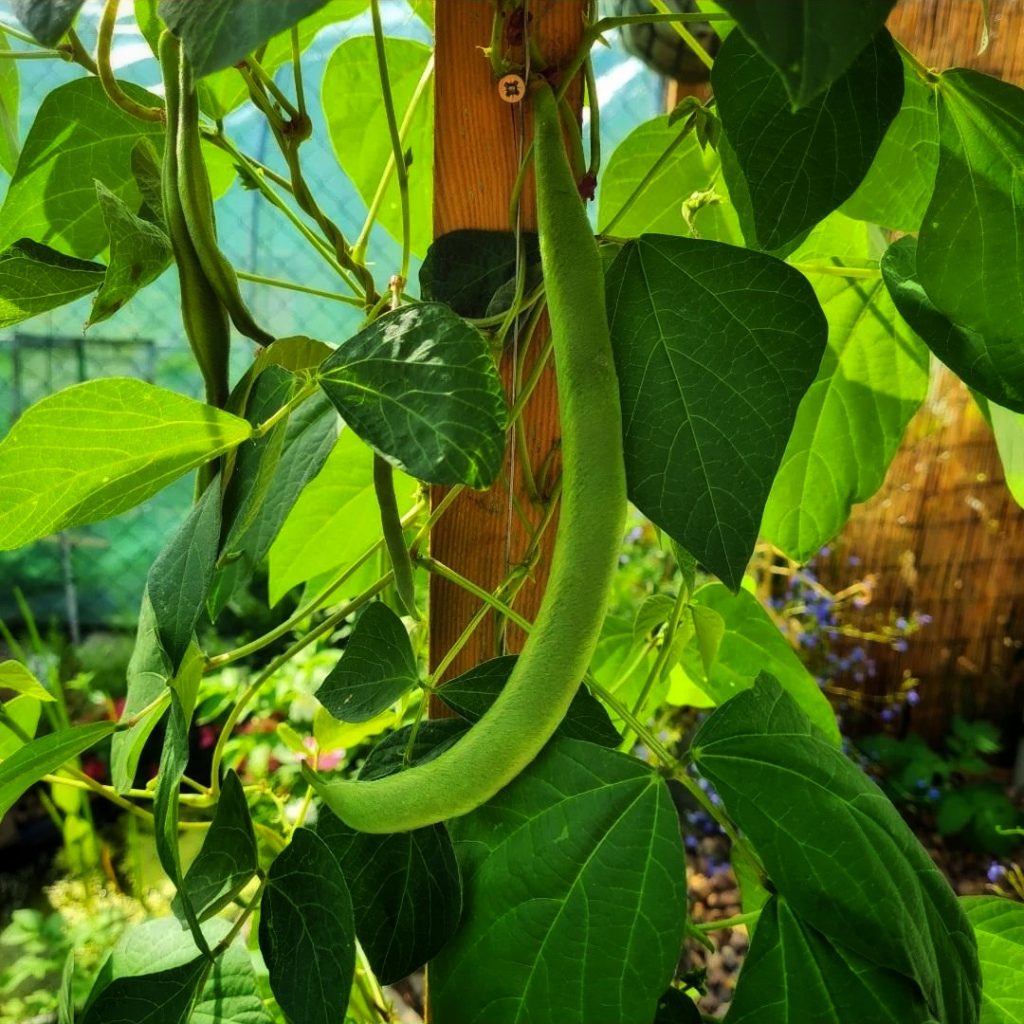
How to Grow Runner Beans
Runner Bean Varieties to try
Affiliate links
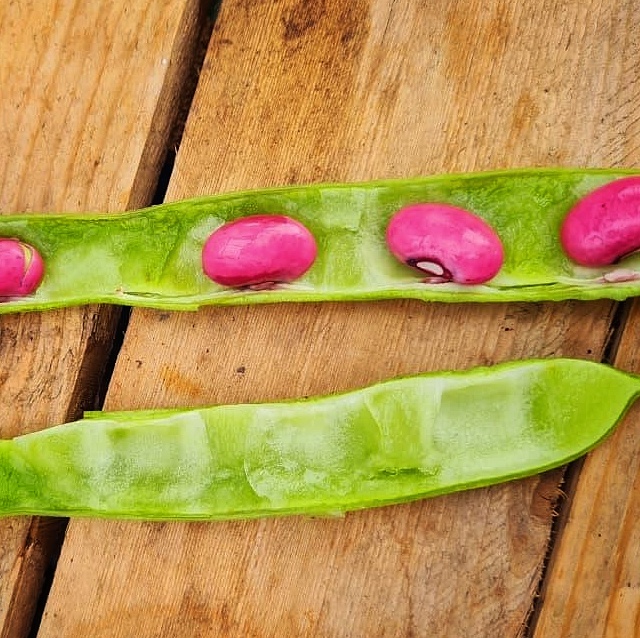
My Favourite! Scarlet Emperor Runner Beans
Sowing Runner Beans Indoors
Sow Runner Beans in Spring (April-May), in deep pots (They have a very long root system)
Plant seeds around 2 inches deep
Place on a sunny windowsill, water and cover with cling wrap or a Propagator lid until seedlings emerge.
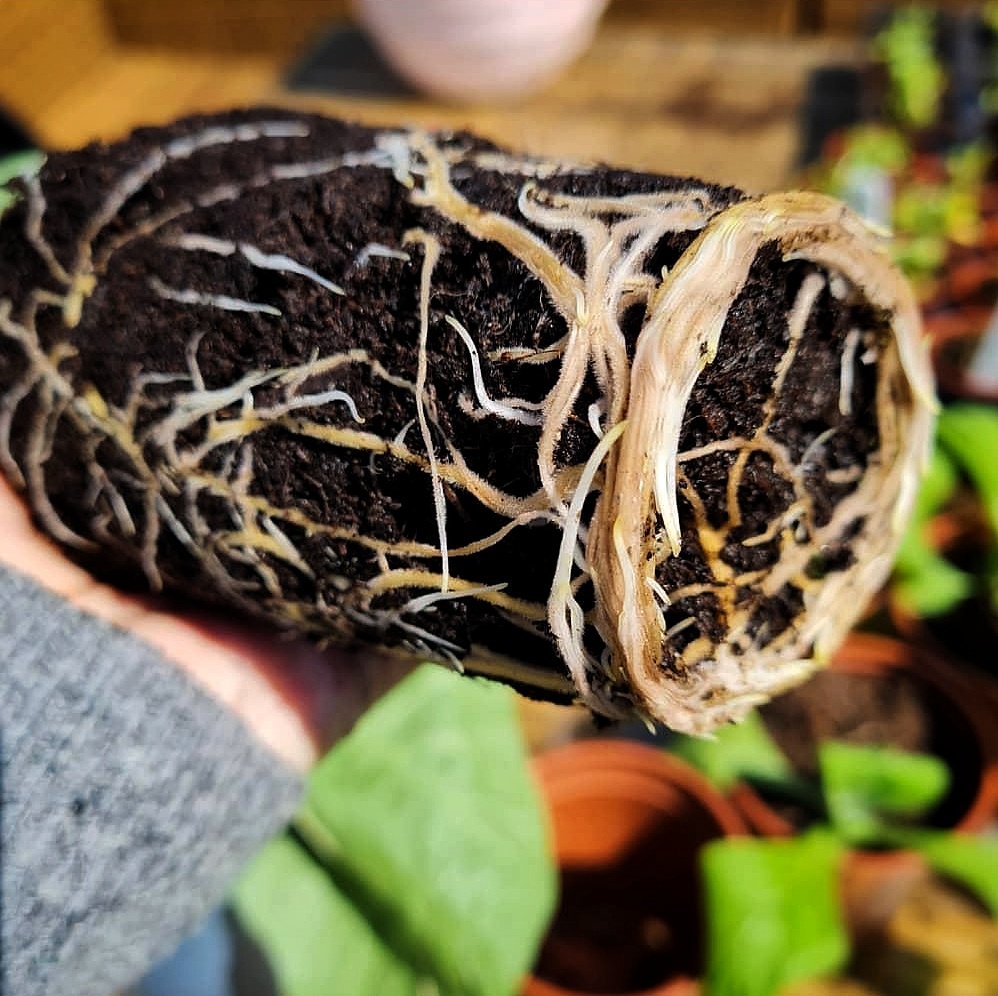
Plant out once all risk of frost has Past, around May-June-Runner beans don’t like cold soil, they will sulk and refuse to thrive, so wait until the soil has warmed to at least 10ºC before planting them out.
Be sure to Harden off your plants first.
What Does Hardening Off Mean?
Plants raised indoors or in a greenhouse environment, need to be acclimatised to cooler temperatures and increased air movement for about two to three weeks before they are planted outdoors permanently . This is a ‘toughening up’ practice to prepare the plants for their new environment.How to Harden Off
Place your plants out for a couple of hours in a shady part of the garden. The next day, leave them out again for two hours, but this time allow the plants an hour of direct sunshine in the morning. Gradually continue to increase the length of time the plants are in direct sunshine over the course of roughly two weeks.
Warning– Runner Beans grow fast! Don’t be tempted to sow your seeds to early, they absolutely will take over your house! Need Proof, here you go….
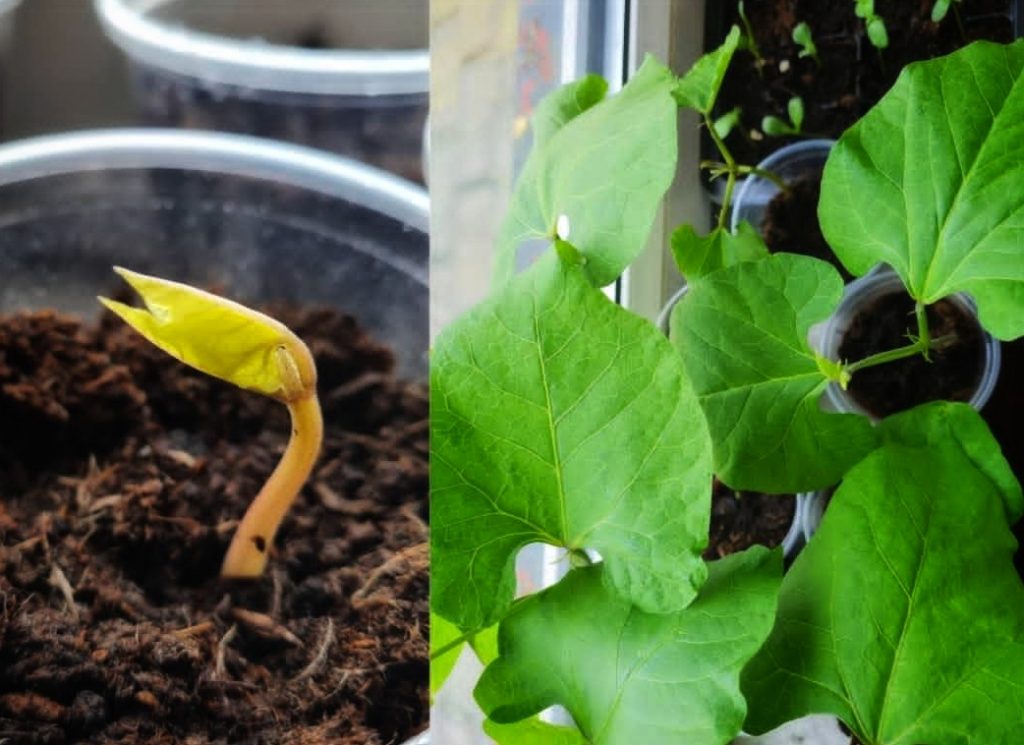
Sow Outdoors in Pots
If you don’t have the windowsill space, sow outdoors in small pots in May, plant seeds 2 inches deep and water well, once the seedling has grown to roughly 10cm tall, plant out in their final positions.
Sow Directly into the Ground
Runner Beans need warmth to germinate, so wait until all risk of frost has passed. Its best to sow directly May- Early June depending on where you are in the uk, wait until the soil has reached a temperature of around 12°C. Sow Runner Beans 2in deep and provide a growing structure for them to climb, water well.
Where and How to Plant Runner Beans
Runner beans will thrive in rich fertile soil in a full sun position. If you can, dig in some organic matter (manure) in the intended bed around 2 weeks before planting out the Runner Beans, this will enrich the soil , giving the Runner Beans a good boost right from the beginning.
Runner Beans Water Requirements
Runner Beans are a particularly thirsty plant and so will require regular watering, more so once the flowers develop. As the pods begin to form the plant will take all it needs form the earth, give it a helping hand by mulching around the base of the plant to lock in the moisture.
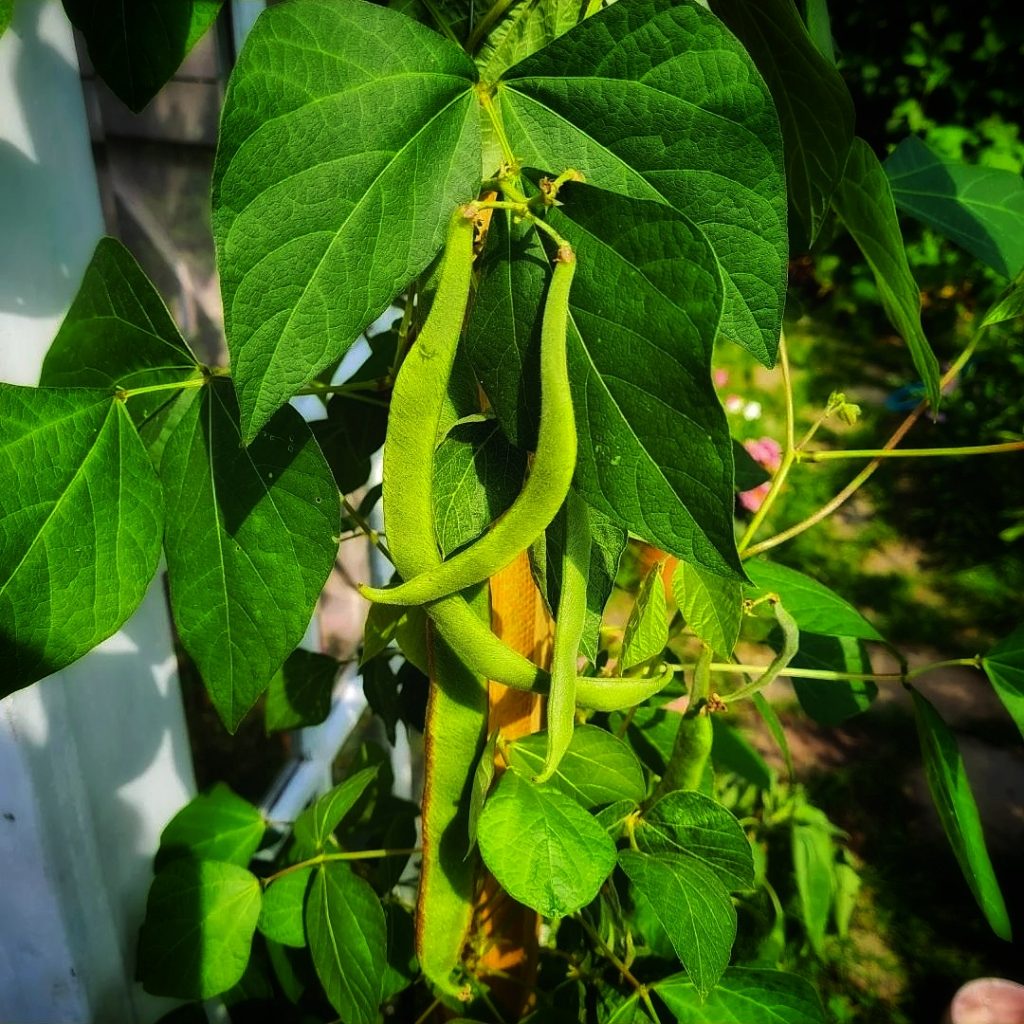
Supports for Runner Beans
Be sure to have Growing structures in place the moment The Runner Beans are in the ground, you could blink- and the plant would already be a metre tall! The structure or frame you choose, needs to be sturdy enough to support the lanky 2m vines of the Runner Bean, more so when the heavy pods develop!
So plan wisely, you could grow them up a garden arch, fashion a Bamboo Wigwam or simply grow them over a fence. As long as they have something robust to climb, they’ll be happy! *You may need to tie young plants to their supports at first, but once they take hold they will climb and attach without any assistance.
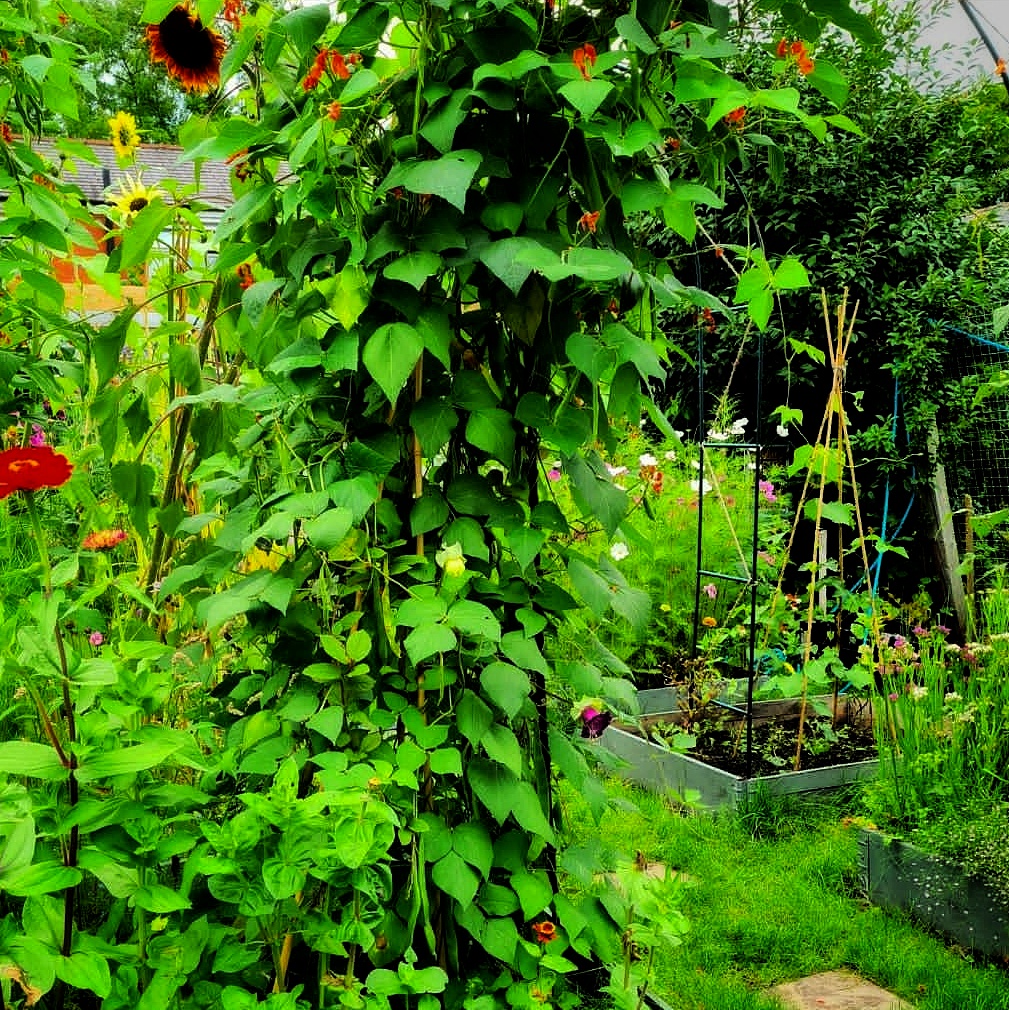
Common Runner Bean Problems and fixes
- One of the most common runner bean problems is plants flowering but then failing to develop pods. This is mainly due to various environmental challenges, such as very hot weather, water drought and poor pollination. This issue rarely needs action, as the season continues you will probably find the problem resolves itself.
- Aphids can sometimes infest Runner Bean Plants, here are a couple of solutions for this… You could spray the plants with a soapy water mix (Drop of washing up liquid, mixed with water) to reduce the number of aphids. The Garlic Method- Crush three or four garlic cloves and soak in water before spraying it on the plant. Much like Vampires, Insects are not fans of Garlic! The Garlic spray helps to repel them.
Harvesting your Runner Beans
Runner Bean pods should be ready for harvesting mid Summer and will quickly go from flat to fat! They grow very quickly! Harvest every 2-3 days right up until the first Frost. *Regular harvesting is essential to prevent any pods reaching maturity. Once that happens, plants will stop flowering and no more pods will form and harvest will be over.
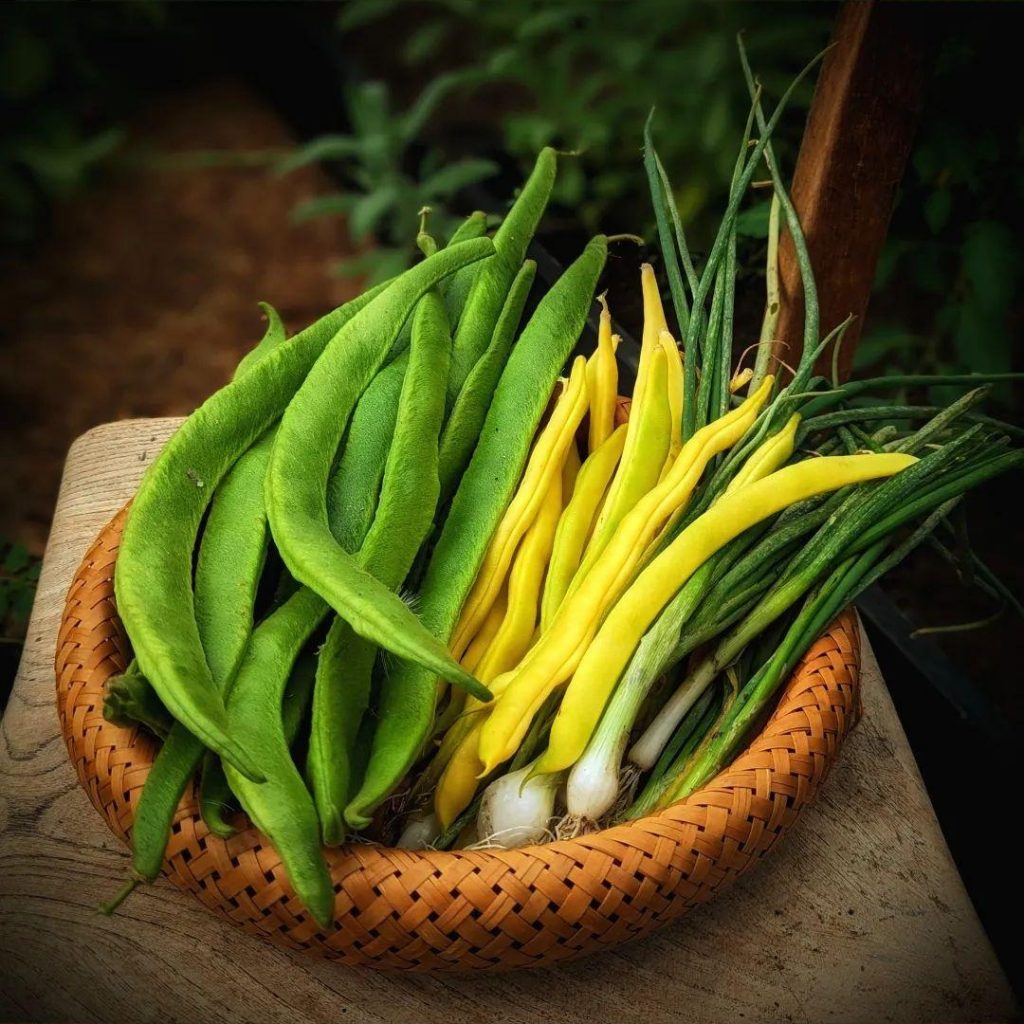
How to Store Runner Beans Long Term
You are going to have more runner beans than you can eat in one sitting or even 5 sittings, Runner Bean plants are prolific heavy croppers, so a long term storage solution is handy to have! Here’s how I Store mine…
Runner beans freeze very well. Prepare them properly, and they will last for up to 6 months in the freezer. I like to cut the pods in 4’s, blanch them in boiling water for around 2-3 mins, then dunk them in ice cold water. I then bag the prepared pods in individual or family meal size portions and put them in the freezer.


